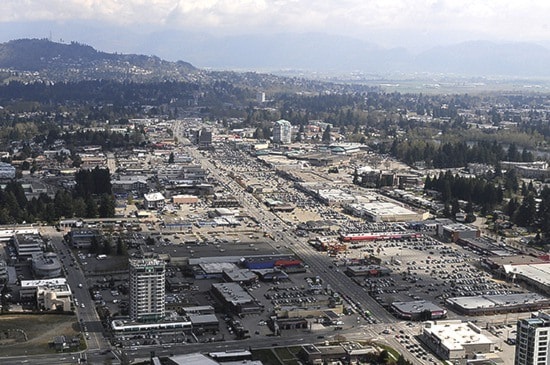Figures released from the 2011 National Household Survey indicate that in the Abbotsford-Mission Census Metropolitan Area (CMA) 15.3 per cent of the work force (age 25 to 64) have no certificate, diploma or degree.
That’s the highest percentage of any CMA in Canada. (A CMA is a region consisting of a populated urban core and less populated surrounding areas.)
The Brandford CMA was just behind Abbotsford at 15.2 per cent while Victoria had the best numbers with only 7.3 per cent of the work force having no diploma of any kind.
Abbotsford-Mission ranked last (55.2 per cent) for workers with higher than a high school education. Quebec City led the country with 73.6 per cent of the work force having a post-secondary education.
Finally, 29.5 per cent of workers in this CMA have a high school diploma as their highest form of education, second highest in Canada.
Marc Lachance, a spokesperson for the National Household Survey, said all three numbers must be considered together to see the whole picture.
While 15.3 per cent of the workforce doesn’t have a high school diploma, adding the other two statistics together reveals that 84.7 per cent have a high school diploma or higher.
Those stats are only for the workforce and don’t take into account people who may have retired or be in between jobs. It also does not factor in the population under the age of 25 that could currently be enrolled in post-secondary programs.
Vlad Dvoracek, associate vice-president of Institutional Research and Planning for the University of the Fraser Valley (UFV), doesn’t think that Abbotsford or the Fraser Valley is the worst in Canada.
“Does the Fraser Valley have a low university participation rate? The answer is yes, so the trend is certainly there. And do they have a high high school drop-out rate? The answer is yes to that too,” said Dvoracek.
So while he said the specific data and rankings should be taken with “a grain of salt,” the general idea that this area has a high drop-out rate and low post-secondary participation, is true.
Dvoracek points to the “resource commodity” history of the Valley area as one possible factor, noting that in the past fishing, lumber and now agriculture were the major employers.
He said parents who went to university are “much more likely to have kids who go to university” and many current UFV students are “first generation” students.
Immigration could also impact the stats, but Dvoracek said it’s tricky to decipher because, different immigration groups have high or low post-secondary participation rates.
He said, in general, UFV has been vocal in the community, trying to encourage students to attend university.
And there is a demand. UFV has seen increasing participation in recent years, but accommodating the demand is more difficult.
“If we had more funding from the ministry we could provide more seats for students.”
He also noted that another factor could be that it was only in 2008 that the Fraser valley received its own university.
Until then he believes “it was the largest catchment that didn’t have one.”
Other stats:
The household survey also examined how and when people go to work.
Cars, trucks and vans are the most popular way, with 71 per cent of B.C. workers using them. In Abbotsford-Mission, that number increases to 85 per cent.
Public transit is used to get to work by 12 per cent of Canadians (12.6 per cent of B.C.ers), but by only 2.5 per cent of Abbotsford-Mission workers. Walking finished higher at 2.6 per cent. Biking was just 0.8 per cent.
“What’s interesting in Abbotsford is we also looked at the time it takes to go to work,” said Lachance.
Nation-wide, 17 per cent of Canadian commuter take more than 45 minutes to get to work. In B.C. that percentage drops to about 16.5.
In Abbotsford-Mission, 21 per cent o the commuters take longer than 45 minutes.
Lachance said that is likely due to a higher number of people heading to Vancouver and the surrounding area. It would also be an indication of why more people in this area use cars rather than public transit.
In Abbotsford-Mission, 10 per cent leave for work between 5 and 6 a.m. Across Canada, only six per cent leave that early.
Other information released in the study includes:
Top jobs:
The top job for males in the Abbotsford-Mission CMA is transport/truck driving at 6.4 per cent, followed by retail sales at three per cent. The top job for females is retail sales at five per cent and cashier at 4.2 per cent.
Top Industry:
Agriculture/farming is the top industry with 5.3 per cent of the work force, followed by elementary and secondary schools with 4.7 per cent and hospitals/health at 3.5 per cent.
Lachance said retail would be considered the top industry; however it is broken down into smaller categories (restaurants, clothing, automotive etc.)
Language:
English is the primary language used by the work force in the local CMA. About 93 per cent speak English followed by Punjabi at 4.2 per cent.
